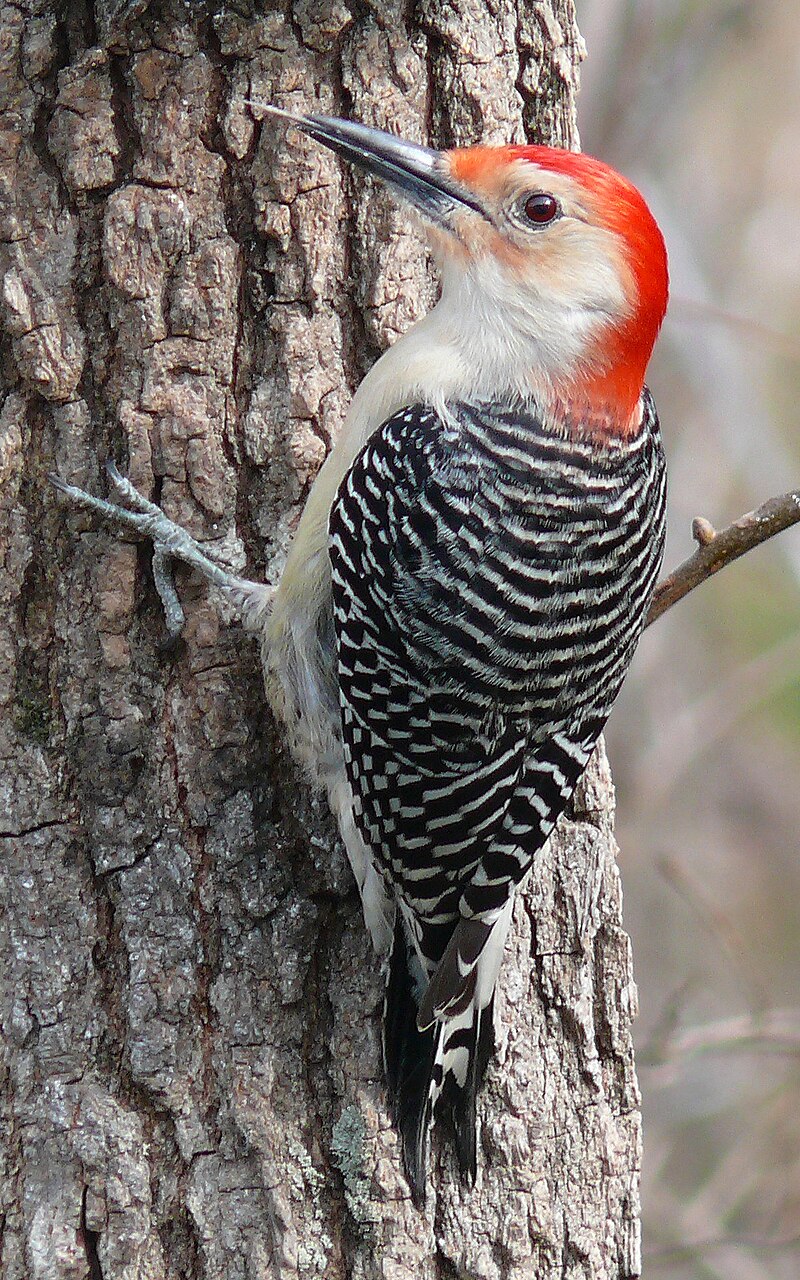Discover the Remarkable World of Woodpeckers: Every Little Thing You Required to Know
The world of woodpeckers is a world filled up with distinct habits, elaborate adaptations, and a varied variety of varieties. From their environments and distribution patterns to their feeding routines and specialized anatomical functions, woodpeckers have actually long mesmerized the rate of interest of ornithologists and nature enthusiasts alike.
Woodpecker Habitats and Circulation
Woodpeckers live in a diverse variety of environments worldwide, showcasing versatility in their circulation patterns. These durable birds are found in forests, forests, savannas, and deserts across numerous continents, showing their capacity to flourish in various weather problems. In The United States and Canada, as an example, woodpeckers can be detected in both coniferous and deciduous forests, using their strong beaks to forage for bugs and produce nesting tooth cavities in trees. In Africa, particular woodpecker species have actually adapted to arid atmospheres, such as the acacia timberlands, where they play a crucial role in controlling insect populaces.

Feeding Behaviors and Diet Plan
Amongst the various facets of their actions, woodpeckers display distinctive feeding practices and nutritional choices. These birds are mostly insectivores, with a diet that includes ants, beetles, caterpillars, and other pests discovered in trees. Woodpeckers use their strong beaks to pierce right into the bark of trees, probing for insects and larvae concealed beneath the surface. Along with pests, woodpeckers additionally eat nuts, seeds, fruits, and sap. Some types have actually specialized tongues with barbed suggestions that help them remove bugs from crevices in wood.
Woodpeckers are known for their drumming habits, which serves not just to communicate with other woodpeckers however likewise to locate food. The quick drumming noise is developed by the bird pecking on powerful surfaces like dead trees or metal poles. This habits can attract bugs hidden in the timber, allowing the woodpecker to spot their visibility and feed on them.
Unique Adjustments for Tree Climbing
In their adept pursuit of bugs hidden within tree bark, woodpeckers have advanced remarkable physiological features that outfit them with unique adaptations for efficient tree climbing. One of the key adjustments is their zygodactyl feet, with two toes pointing ahead and two pointing backward, supplying a solid hold on tree trunks. This navigate here customized foot setup allows woodpeckers to stick to upright surface areas easily, allowing them to relocate up and down trees with dexterity. Furthermore, woodpeckers have tight tail feathers that function as an encouraging prop while they climb up, assisting in balance and security. Their solid, chisel-like beaks are not just made use of for boring into timber but likewise for clutching onto bark as they rise tree trunks. Woodpeckers have solid neck muscle mass and a special skull framework that take in the influence of constant pecking, permitting them to climb vertically without creating injury to their minds. These adaptations showcase the unbelievable transformative design that enables woodpeckers to browse trees with accuracy and effectiveness.
Diverse Woodpecker Variety Worldwide
With over 200 various types spread out across various habitats worldwide, the family members of Picidae incorporates an amazing diversity of woodpeckers. These birds can be found check that in woodlands, timberlands, savannas, and also metropolitan areas, showcasing their adaptability to different environments. From the iconic Northern Flicker in The United States And Canada to the vivid and evasive Crimson-backed Flameback in Asia, each woodpecker types exhibits one-of-a-kind attributes in terms of plumage, habits, and habitat preference.
Woodpeckers vary significantly in size, with the petite Downy Woodpecker determining around 6-7 inches in length, while the effective Lineated Woodpecker can rise to 17 inches - Woodpeckers in Florida. Their beaks likewise come in various sizes click this site and shapes, reflecting their feeding behaviors. Some types concentrate on drawing out bugs from tree bark, like the Acorn Woodpecker, while others, such as the Black-cheeked Woodpecker, feed upon fruits and seeds

Conservation Initiatives and Challenges
Preservation initiatives for woodpecker populaces are critical in reducing the effect of environment loss and various other threats dealing with these varied bird varieties. Woodpeckers encounter numerous challenges to their survival, primarily due to logging, urbanization, environment adjustment, and intrusive varieties. To address these issues, conservation efforts concentrate on protecting and restoring woodpecker environments, implementing lasting forestry techniques, and elevating recognition concerning the significance of these birds in environments.
One considerable difficulty in woodpecker conservation is the fragmentation of their habitats, leading to separated populaces that are a lot more vulnerable to extinction - Woodpeckers in Florida. Conservationists work to develop wild animals passages and safeguarded areas that attach these fragmented environments, enabling woodpeckers to move in between various areas for feeding, breeding, and sanctuary

Conclusion
In verdict, woodpeckers are remarkable birds with unique adjustments for tree climbing and feeding behaviors. Further research and preservation activities are required to make sure the survival of woodpeckers in the wild.
Comments on “Observing Woodpeckers in Florida: Variety Diversity and Circulation”